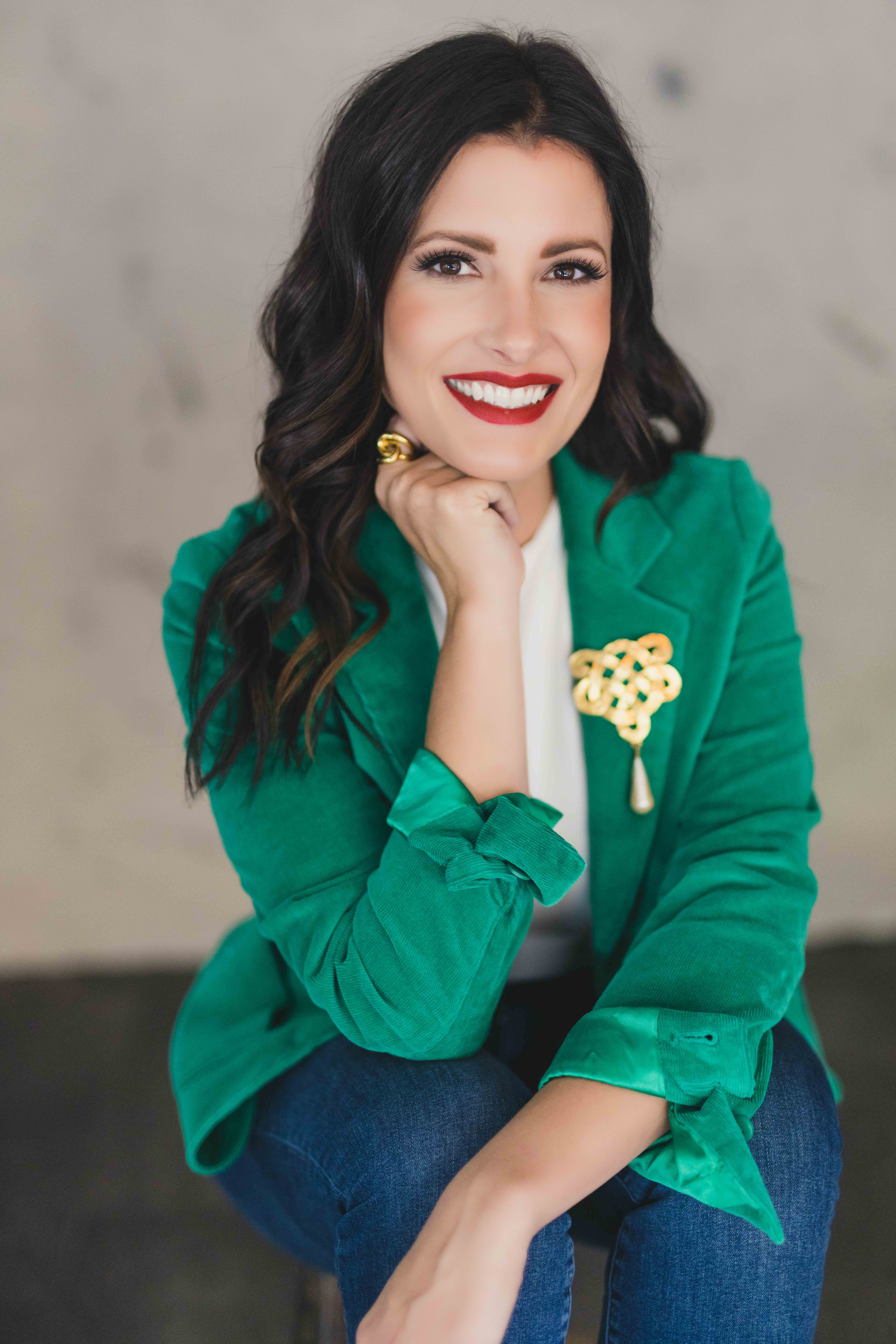The 50 States Project is a series of candid conversations with interior designers across the country about how they’ve built their businesses. This week, St. Petersburg, Florida–based designer Lisa Gilmore tells us about the business coach who helped her more than double her revenue in one year, why taking reservations for consultations has been a game-changer and how she got over feeling overwhelmed.
Did you always know you wanted to be a designer?
I did. I grew up in a very creative family, but more of an arts-and-crafts hobby kind of creative. My grandmother was an art teacher and my mom is a painter; we had homemade costumes for Halloween every year, and my mom was always making things, so it was a very artistically driven, think-outside-the-box environment. I was born and raised in Central Florida, in a very small, rural town—it’s farm country and cows. Growing up in an area like that and wanting to be a creative professional, I always thought I would have to be an art teacher. Then, when I was in high school, I discovered Candice Olson and her HGTV show Divine Design. It really opened my eyes to design as a career.
I went straight to design school in Tampa and worked with designers while I was in school, so I really jumped in headfirst. I didn’t have the normal college experience of parties and sororities like a lot of people—I was going to a year-round trade school, working for designers and totally nerding out, and I was just so hungry to learn everything I could.
What were those early jobs like?
I worked at a few local boutique firms, doing assistant work like cleaning the libraries. It was so different then—we had to fax our purchase orders in, and the firms still had a library room with catalogs, because the product wasn’t online yet. I learned the industry in a very old-school fashion, and I’m so grateful for that time, because it really laid a foundation for remembering things differently, too.
What was your path after graduation?
I had insane student loans, so I was serving tables, working at a flooring store, working with a local design firm, and still not making any money. I was in this phase of wanting to learn everything. But I was so tired of Florida—I was living in a place where everyone was doing these weird, faux-Mediterranean McMansions, and it didn’t feel creative. I didn’t want to do things that everyone’s neighbor was doing. That’s when I discovered Kelly Wearstler’s book. I found it on my lunch break one day, and it was like a whole world opened for me to realize that people actually want and crave this cool design that’s full of color and pattern.
As a way to leave Florida, I sent my resume to, like, 20 designers in Chicago. I was so naive—it was 2008, and I knew what was going on with the economy, but I also didn’t really know what was going on with the economy. I was just so young and so hungry. Now that I’m a business owner looking back, I feel like if I were to get the resume that I sent around at the time, when all the design firms were struggling, I would have been like, “This idiot, who does she think she is? I can’t hire anyone right now.”
Did you hear back from anyone?
I heard back from two of them. One was very sweet, but was like, “Oh, honey, this is cute, but have you looked at the economy?”
Another woman emailed back and said she was looking for an intern. I flew to Chicago, and I met with her. It was a very small boutique firm—just her and a senior designer—and we hit it off. They hired me on the spot for an internship and I moved to Chicago that September. Then she put off my start date, so I was totally spiraling and freaking out, thinking maybe I had made a mistake. I finally started working with her, and I wasn’t getting paid much as an entry-level hire, but I gained so much experience. I worked there for about three years.
Why Chicago?
I was previously married, and he was from there. I was born and raised in a very small town, and we didn’t travel a lot, so it was a goal of mine as I got older. So when I was with him, we went to Chicago—it was the first metropolitan city that I’d visited, and I just fell in love. When I got on the plane after that first trip, I just cried. I was like, “I don’t want to go home. I don’t want to go back to Florida.” So that’s what really started it.
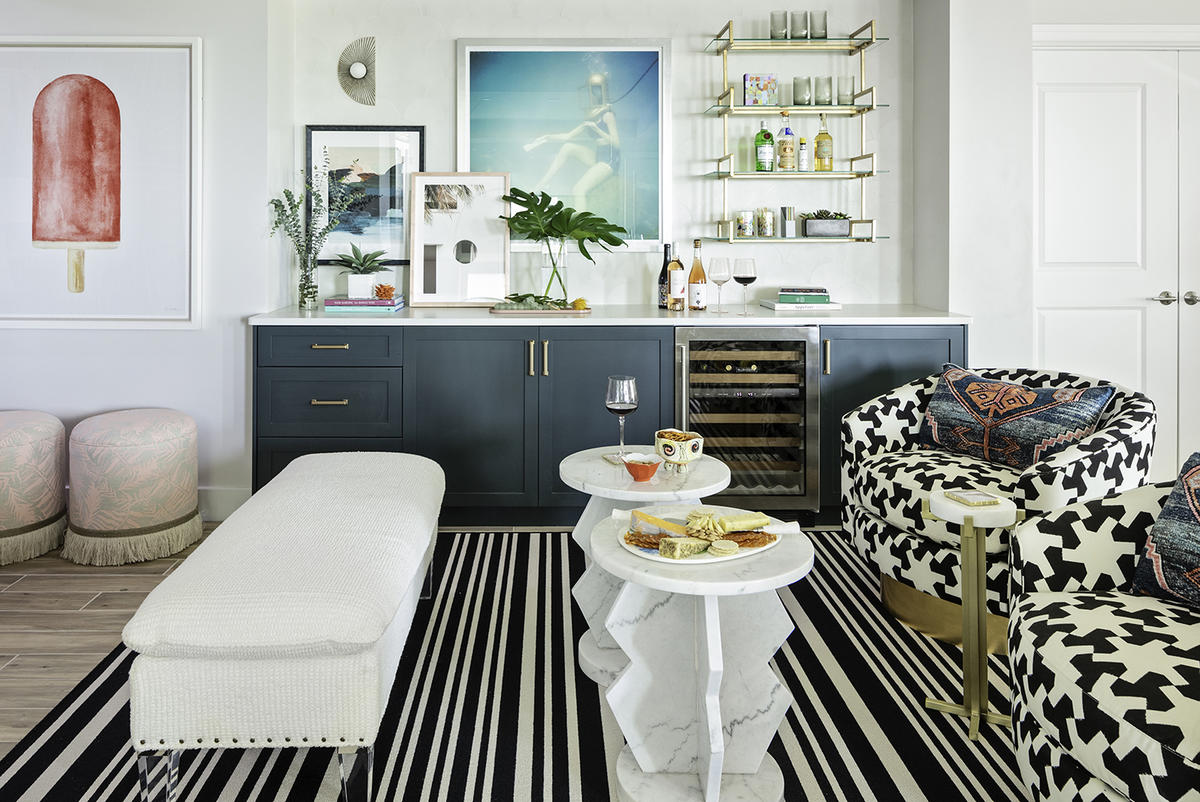
How did that design job in Chicago shape your experience?
I’m so grateful for my time working for Sarah Van Assche. She’s retired now, but she had her firm for more than 20 years, and I learned so much about running a small business from her. She had a big prewar corner apartment in East Lakeview and she had turned half of it into her office. We worked out of her home, and it was unlike any experience I had ever had. We would go to the Merchandise Mart to source, which has played such a big role in my learning.
What did going there cement for you in terms of your understanding of the industry?
It was such an eye-opening thing to be able to see everything in person. In school, you hear about different silks or different types of embroideries, but to actually be able to go into a showroom and see those things—you can’t teach that from a website. The education and the events they would have alone—you can’t replace that. Being in Florida now, that’s something that I miss so much, because we don’t have that here in Tampa Bay. That was something that was really hard to adjust to when I came back. I still have so many of my relationships in Chicago—I actually still order through a lot of those showrooms. They were such a huge part of my beginning that I’m like, “I will continue to support you.”
What was the aesthetic at Sarah’s firm more of a match for you than the Tuscan-inspired designs in Florida?
No, it wasn’t, which is really funny. She’s very monochromatic. Her aesthetic was cottagey mixed with French—she was very inspired by French design. She would use a lot of antiques mixed with the clean lines of pieces from Baker. Some of our clients were very prestigious people and the economy’s downturn didn’t really affect them. I definitely lived in a bubble a little bit, and I was able to learn about luxury design during a time when most of my friends from design school were not able to get jobs in the industry.
You moved back to Florida after that role. Why the change of heart?
I had gotten married, and my then-husband got a job back in Florida with the police department in Tampa. We had to make a decision, and it was one of those things where his job provided insurance and security, while I worked for these creatives and it wasn’t really stable. But I was upset and in denial—I was 25 and I felt like I failed by moving back to Florida.
After we moved, I started looking around for a job. I had every intention of working for a firm. But as I was looking at the firms in the Tampa Bay area, I felt like my aesthetic didn’t fit in. Everything that I learned in Chicago and gained and all that experience—I felt in my heart that if I worked for a local firm, it would go to waste. Or at least, for the longest time, I thought that was my driving force. Recently, I realized that I think I was scared of being rejected. Rather than putting myself out there and applying for jobs and being told that I wasn’t going to fit in with my portfolio or my goals, I was like, “Screw it, I’m going make my own.” I totally built a business out of stubbornness and fear of being rejected.
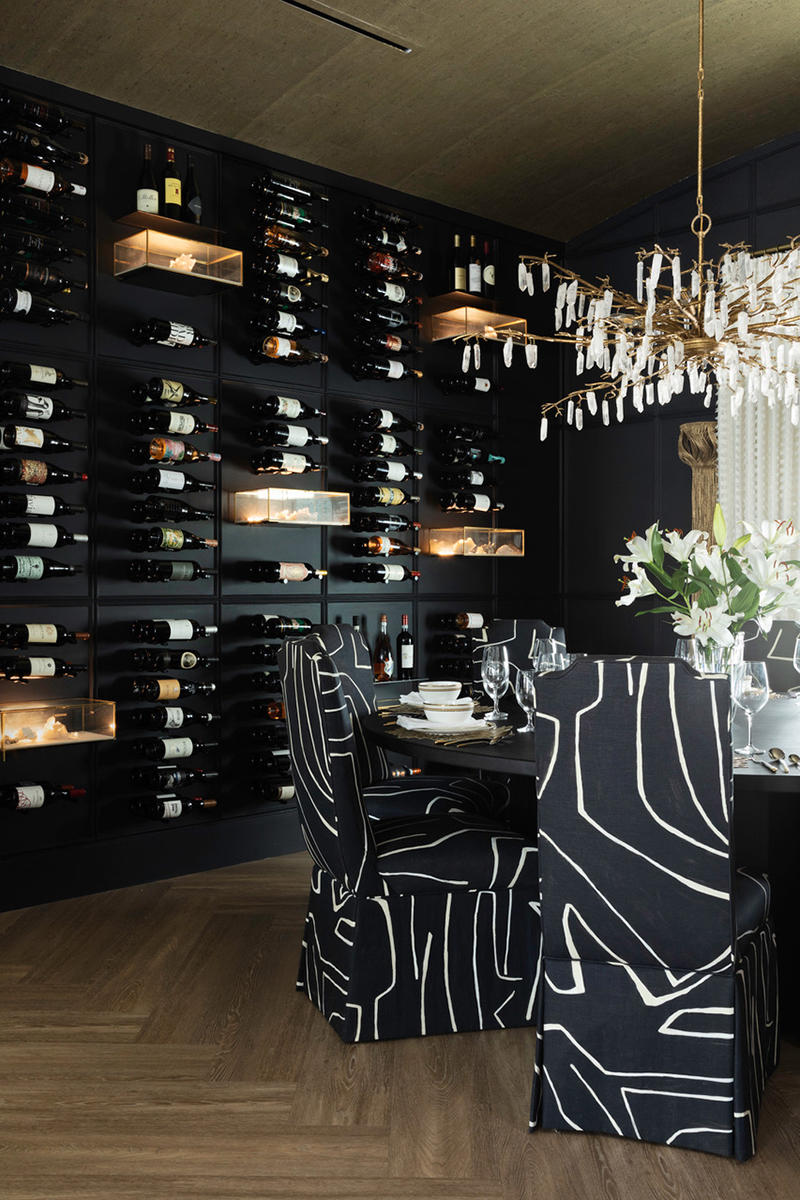
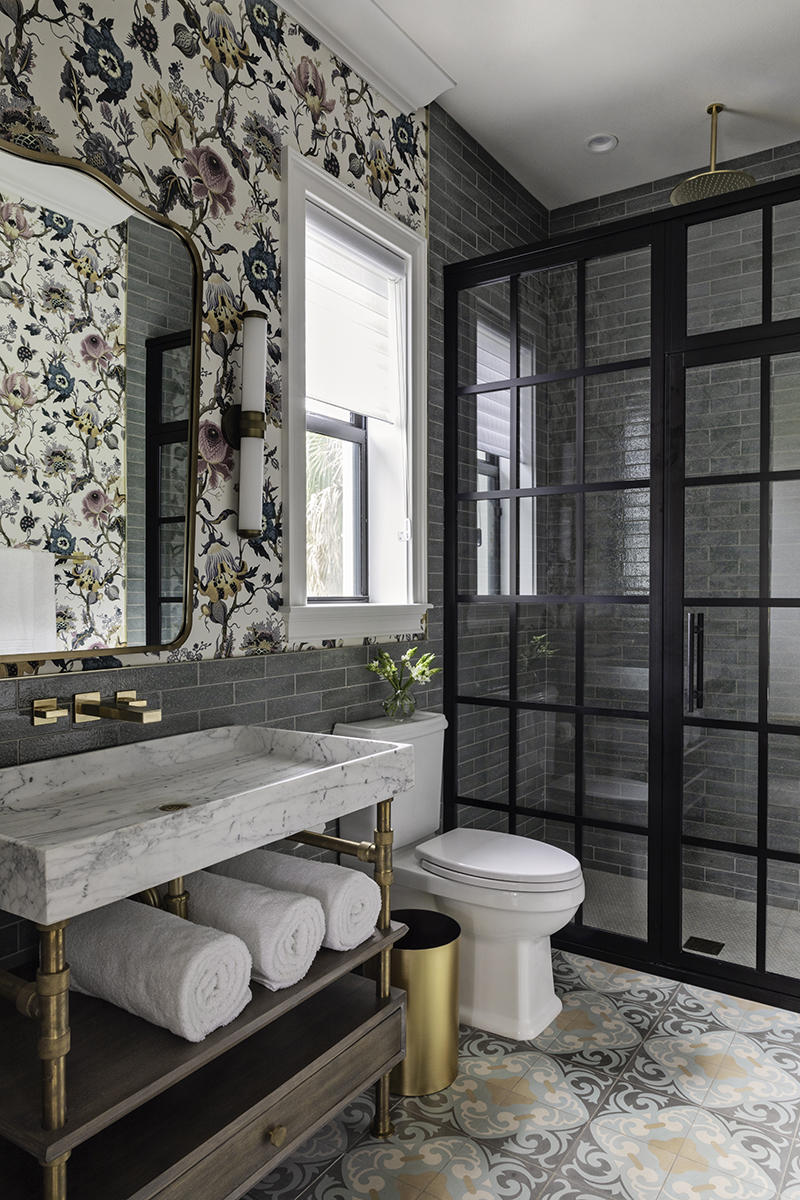
So you’re new in town and you start a business. What did that look like?
I started my company in December 2011, and I got the business going through word of mouth and networking like crazy. I had a very vintage style and bright red hair at the time, and people would be like, “Oh, my gosh, your outfit is so cool. What do you do?” And I’d tell them, “Oh, I’m an interior designer.” I knew that everyone I met wasn’t going to be my client, but my goal was that everyone I met would think of me when they thought about interior design—and it worked. Meanwhile, I was also working at bars because my student loan debt was insane.
I didn’t have the business acumen when I started my firm. But what I did have in my back pocket was how I had seen the firms I’d worked for suffer. That really inspired me from the beginning to be stronger in terms of not being bullied and having contracts, but I had to learn the financial side of it too. I used to be so scared of it, but now I love it just as much as the design side.
What kinds of things had you seen the firms you work for suffer through?
When clients weren’t paying, I saw how that affected us—it definitely taught me that I will never ever, ever, ever order something without a client deposit. When I was working for Sarah, she had a really bad situation that should not have happened to her, and it happened because she was kind. It made me firm about the fact that I will never let my kindness hurt me financially. It’s funny, because now I have friends who are business owners, and they always say, “You don’t mess around,” or “You’re so regimented.” I’m not a litigious person, but I believe in protecting myself.
What made you fall in love with the business side?
in 2018, I had a big financial crisis. I didn’t know how to manage margins and taxes—really, I didn’t know how to manage my money, and I was completely broke. I was at a conference where I was so inspired by Michele Williams, who is a certified Profit First coach—it’s an approach that’s all about being smart with your money—and [using that approach] helped me get my business out of financial ruin. I completely dug in that year, and I took my business from $825,000 in revenue a year to $2.25 million. In a year.
What did that look like?
Here’s an example: I was doing commercial consulting, but I was really unhappy with it and it wasn’t fulfilling me personally. I started looking at the margins and realized it wasn’t making money, either, so I stopped doing commercial work. I told my team, “I don’t care if the call is for the most amazing boutique hotel in Italy—don’t even tell me about it. This is not our niche.” Once I made that choice, it really changed our clients. Our message was clear, and our residential clients started to become much more high end.
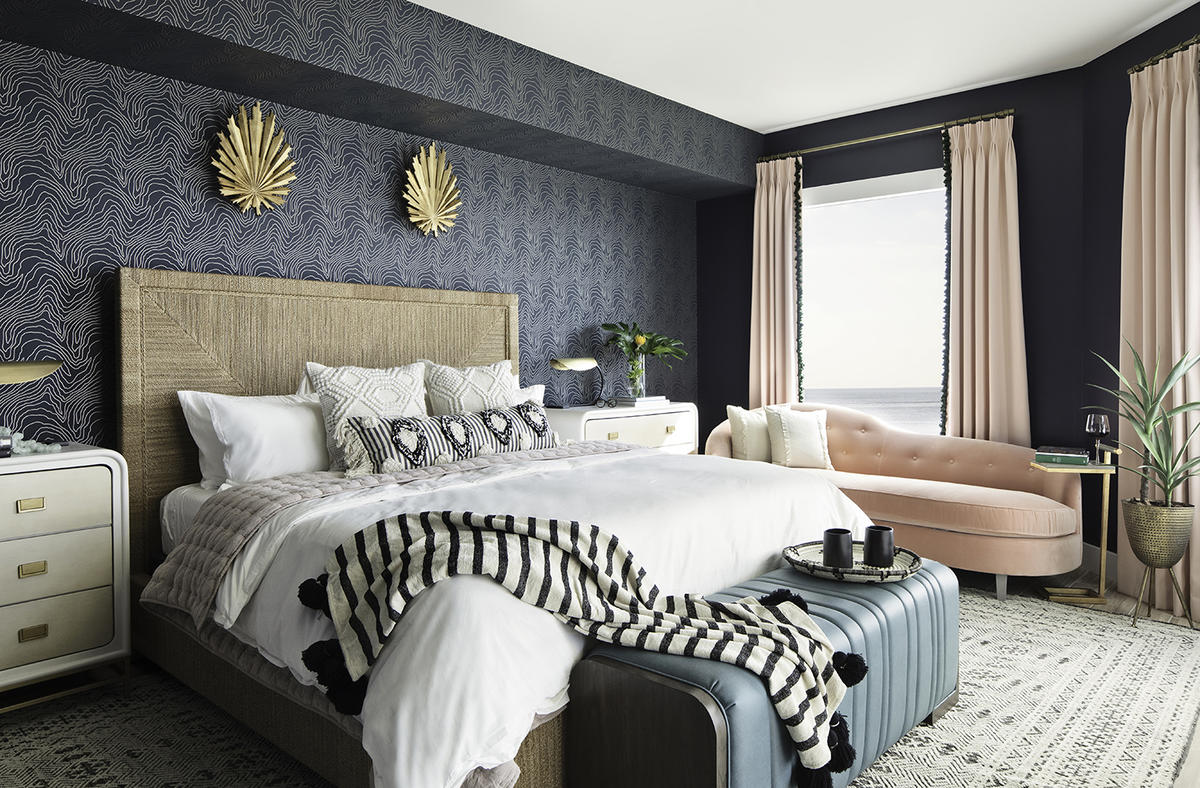
How did you approach growing your team?
The wrong way, at first. For the first three years, I was juggling a job teaching painting classes on nights and weekends, working at a restaurant, and doing design where I could fit it in. Those years were very hard and very tiring. I was spreading myself thin, and I was definitely overworking. If I would have been a little bit more financially savvy—a better understanding of things like taxes and margins—it would have been an easier start.
I hired my first employee when I was about three years in. Looking back, it was too early to have an employee, because I didn’t know how to let go and delegate. I was still trying to figure out my systems and processes. But my next employee is one who’s still with me—she’s been with the firm for seven years now. She started taking on my invoicing and purchase ordering because I couldn’t keep up with the design and I needed someone that could help me with the paperwork. She came from Wall Street, and is now my director of procurement. I haven’t touched an invoice or a purchase order in seven years.
My next hire is now our senior designer, but when I first met her, she worked at a tile showroom. I had gone to that showroom, and there was an older salesperson who completely snubbed me—she was not taking me seriously. Then Nicole came out, and she was super sweet and helpful and I just clicked with her. I knew after that day that she was going to be on my team one day. It was funny, because that ended up being a $150,000 tile sale that Nicole got the commission on. That other salesperson was like, “Oh, damn.” Now Nicole’s been with me for almost seven years. We work hand-in-hand on projects, and she’s been doing some of her own projects for me now—her growth within the company is so amazing.
Then I have a project coordinator who’s been with me for two years in June. She’s the person who coordinates in the field, with the contractors and the client, and sends updates.
In August, I also hired a director of operations. It was the biggest, most exciting move ever. She comes from a construction background, and is remapping our processes. We’re working on outside-the-box ways to improve the client-designer experience. And now we’re actually in the process of hiring an office concierge, which is kind of a glorified office assistant, and we’re going to hire a design assistant this summer. My boyfriend is moving here from Canada eventually, too, and he’s going to be coming on to manage our logistics. We’re in a phase of a lot of growth, which is amazing but also really scary.
Wait, go back to that director of operations role—what has hiring someone to fill that job taken off of your plate?
Oh, my god, it’s given me my life back. COVID has been such a nightmare in terms of delays with furniture, but even more with scheduling. If one crew gets sick and they have to pull their subs off jobs for two weeks, it’s a domino effect. Things have to be done in a certain order, so now your entire schedule shifts in two-week increments, sometimes three or four times in a row. That can add up to six months of delays really quickly, and clients don’t fully get that, so the stress of that alone is heavy. I was feeling like everything I knew and everything I have learned over the past 15 years was being stripped away and tossed upside down. The crazier part about it was the inquiries weren’t stopping. And as I mentioned, my boyfriend is Canadian—we were separated during COVID because of the border closure. So on a personal level, I was really struggling.
We had to shut off our website because I felt like I was having a mental breakdown. I just could not meet with another new person. I would be sitting across the table from these people who were telling me about their projects with so much excitement, and I literally felt like a skeleton. I couldn’t remember people’s names, I couldn’t remember anything. I realized that I was not OK as a person, and it got to the point where I was just like, “I can’t manage all these people.”
I found out about the book Get a Grip from a Business of Home story, actually—it was in your magazine. Reading it, it was the first time I had heard the word visionary used that way before. That’s when it clicked, and my life changed. It made me realize that there’s not anything wrong with me, I’m just a visionary. I need a person that helps me do this—I can’t do it all, and that’s OK.
Had the pressure to be everything for everyone been weighing on you?
For a long time, I had been feeling so much guilt and anxiety. I was questioning myself—questioning all of my education, my mentors, my goals. I was like, “Am I not the designer and business owner that I thought I was?” But the reality was that I was extremely overwhelmed. This is embarrassing to admit, but I spent $3,500 and signed up for an “Out of Overwhelm” class, did two of the classes, and then was like, “I can’t even do this—I’m too overwhelmed to focus on the overwhelm class.” I didn’t have the bandwidth to try to get out of that state without another person helping me. So that’s really what started it.
The woman who is now the firm’s director of operations saw how much I was suffering because she’s been my friend for 10 years. She was like, “This isn’t the Lisa that we all love.” She came in and started looking at our systems, our processes, and our communication. It has allowed me to get back to my creativity, because she was like, “Lisa, if you’re not designing, we’re all screwed.” We’re still learning, because it’s only been six months, but I already feel like a completely new person. I don’t feel alone.
That’s so powerful, the not feeling alone.
I think that was a big part of it, too. I felt like I had this huge burden on myself. Once I figured out that it’s OK to be a visionary—and the relief of knowing there was a name for it—I can’t overstate the benefit of that. So thank you for putting that in BOH, because if it hadn’t been there, I never would have known this word and changed my business.
I’m so glad it helped! Do you feel like you’ve turned a corner, personally?
I’m not afraid to ask for help. I was feeling so guilty because I’ve been so fortunate. My company did $2.25 million in revenue—I’m making great money, and I paid off my student loans last year. I accomplished all these things that I worked for, and yet I was feeling so empty. I was beating myself up because I was like, “I succeeded. I’ve done it. Why am I feeling like I want to give up?” Reading that book changed my whole mindset.
I watched Sara Blakely’s Master Class and she said that as an entrepreneur, the greatest thing you can do is quickly discover and identify your weaknesses, hire for them, and watch [the business] soar [in that area]. Whenever I’m doubting anything, I always go back to that. I’m like, “OK, there’s someone out there with this amazing strength, and I need to find them to make that part of our business soar.”
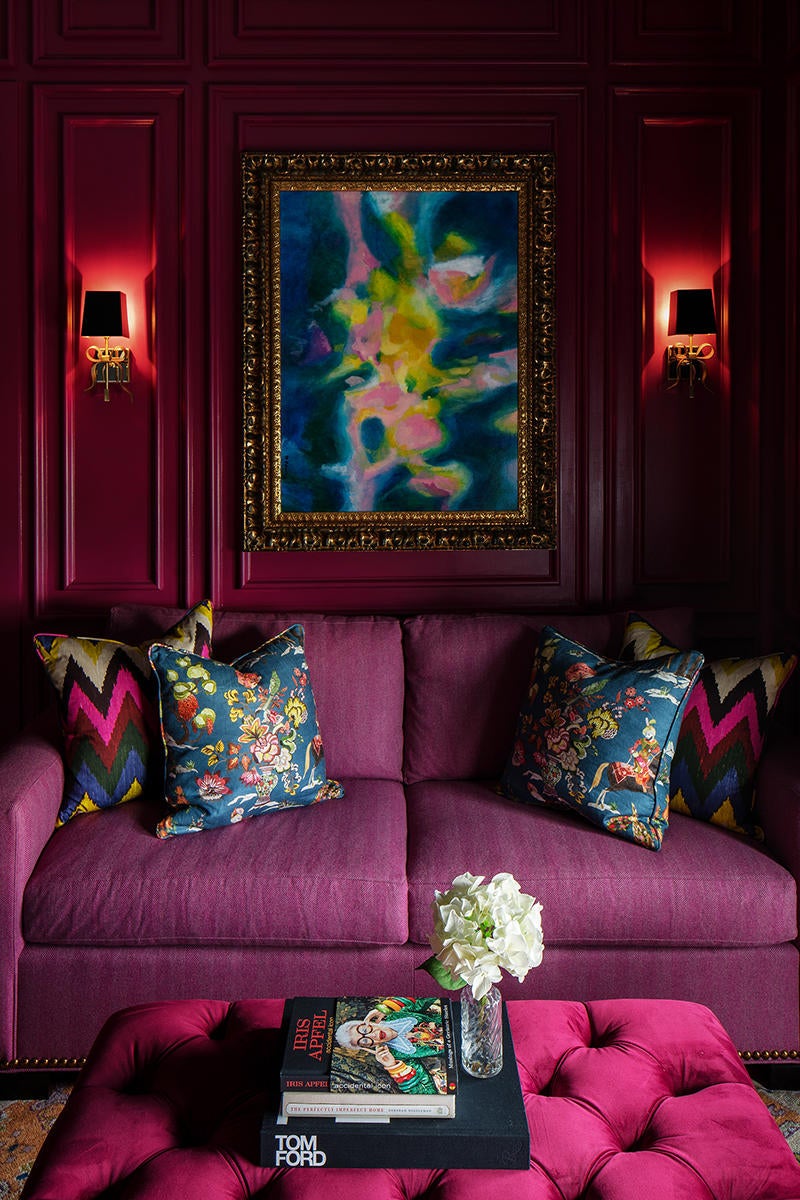
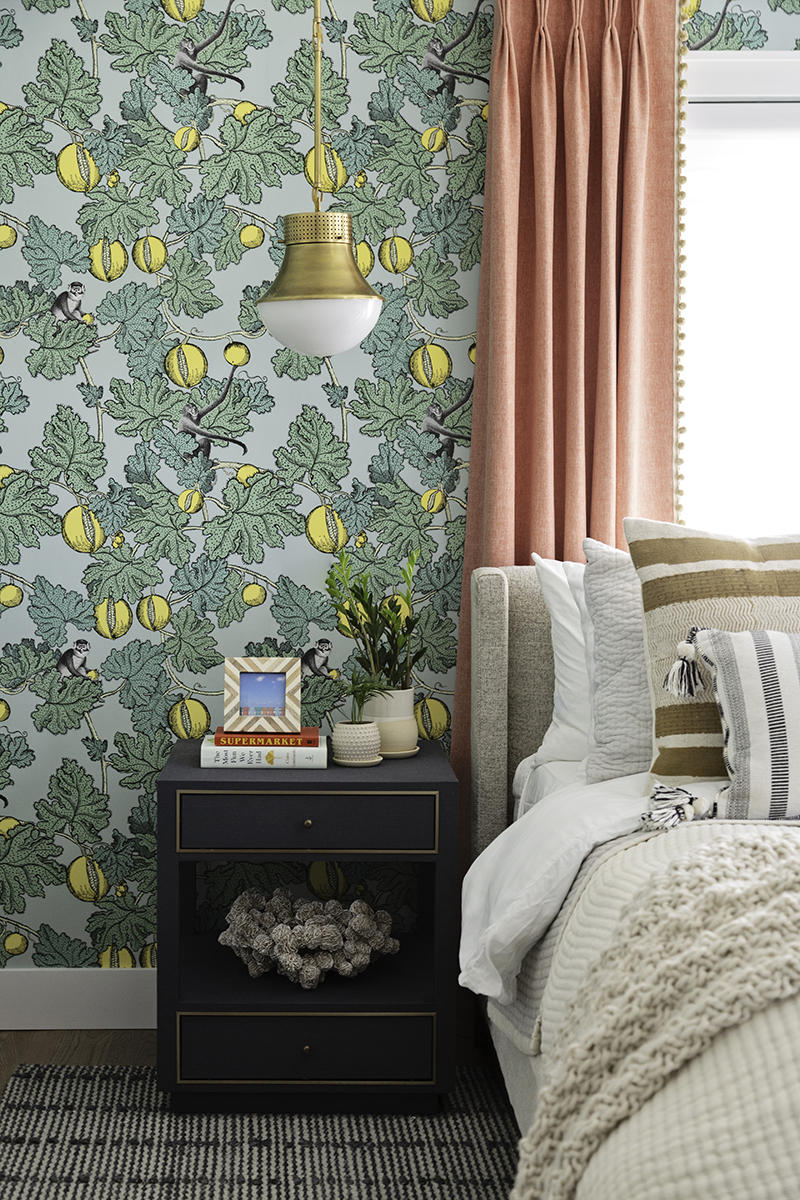
How many projects are you working on right now?
Currently, we have 18 projects. It’s a lot, I’m not going to lie—and some of them feel like we’re dragging them across the finish line because they’ve gone on for so long. They are all large-scale renovations or custom builds, and they’re pretty big. We did a 10,000-square-foot custom build over on Davis Islands—a luxury area where Derek Jeter and Tom Brady and Giselle Bündchen have houses—that we furnished from the hinges to every piece of furniture to the teacups. The clients want the entire experience with us, which is really exciting. It’s wild, because we have a waitlist through the end of the year.
Three years ago, I realized I don’t have to explain our aesthetic anymore. Before, I would constantly be like, “No, I’m not doing the Restoration Hardware look,” or “No, I’m not doing the blue-and-white thing.” Now, if I were to show my clients a piece from RH, they’d be offended. It’s just unbelievable.
I want to go back to that wait list for a second. What’s the story there?
We started taking reservation fees to have consultations—it’s $275 for people to meet with me in my office for an hour, three months out—and it’s a game changer. If people are willing to pay $275 for an hour of time to talk about working on a project, that weeds out so much garbage. It’s also setting the precedent for valuing our time, craft and talent.
How did you decide to implement that? Was it about weeding out some of those inquiries?
It came out of a severe need—when I was like, “I can’t meet with another person,” that’s when we came up with this idea. Now, we do all of the meetings once a quarter, on the second or third Wednesday of the month, and they’re stacked all day. I am literally in consultation meetings from 9:30 in the morning until 5 o’clock. We talk for one day for every quarter, and it sets up our entire following quarter. We now have projects lined up for the next year and a half.
How do you sell prospective clients on that concept?
We tell them that it’s like dating: “You’re paying $275 for Lisa’s time, because she’s removing herself from her current projects. You’re going to talk about your project and your, bring all your inspiration, and we’re going to talk about it. We’re also going to get to know you, go through our process and pricing, and look through our portfolio to see what you are attracted to and to help you understand how we work.” Then I put together a proposal of an investment for furnishings and design. We don’t even see the house until we get a signed contract.
Wow!
It’s lifted away so much stress, and I feel so much more centered. The people who are meeting with us really want to work with us. We’re not purchasing agents anymore, which sometimes happens to designers. People are waiting because they’re like, “No, I want your talent.” I know so many designers would be scared to do it, but even just not rushing so much helps to set the tone for the project, because it’s already going to take longer than you want.
Are you working on any of the jobs you approached this way yet?
Yes, they’re just starting now. We began this whole process last summer, and I didn’t have another new business meeting until last month. We just got a contract from a client who has been waiting to meet with us since last September. I had a great meeting with her three weeks ago, I sent her a proposal, she signed the contract, and we’re starting on her project by going to the house at the end of April. From there, we’re going into the design process with the vision board—she knows she’s not going to be seeing designs until June. And for me, I’m finally able to breathe and design.
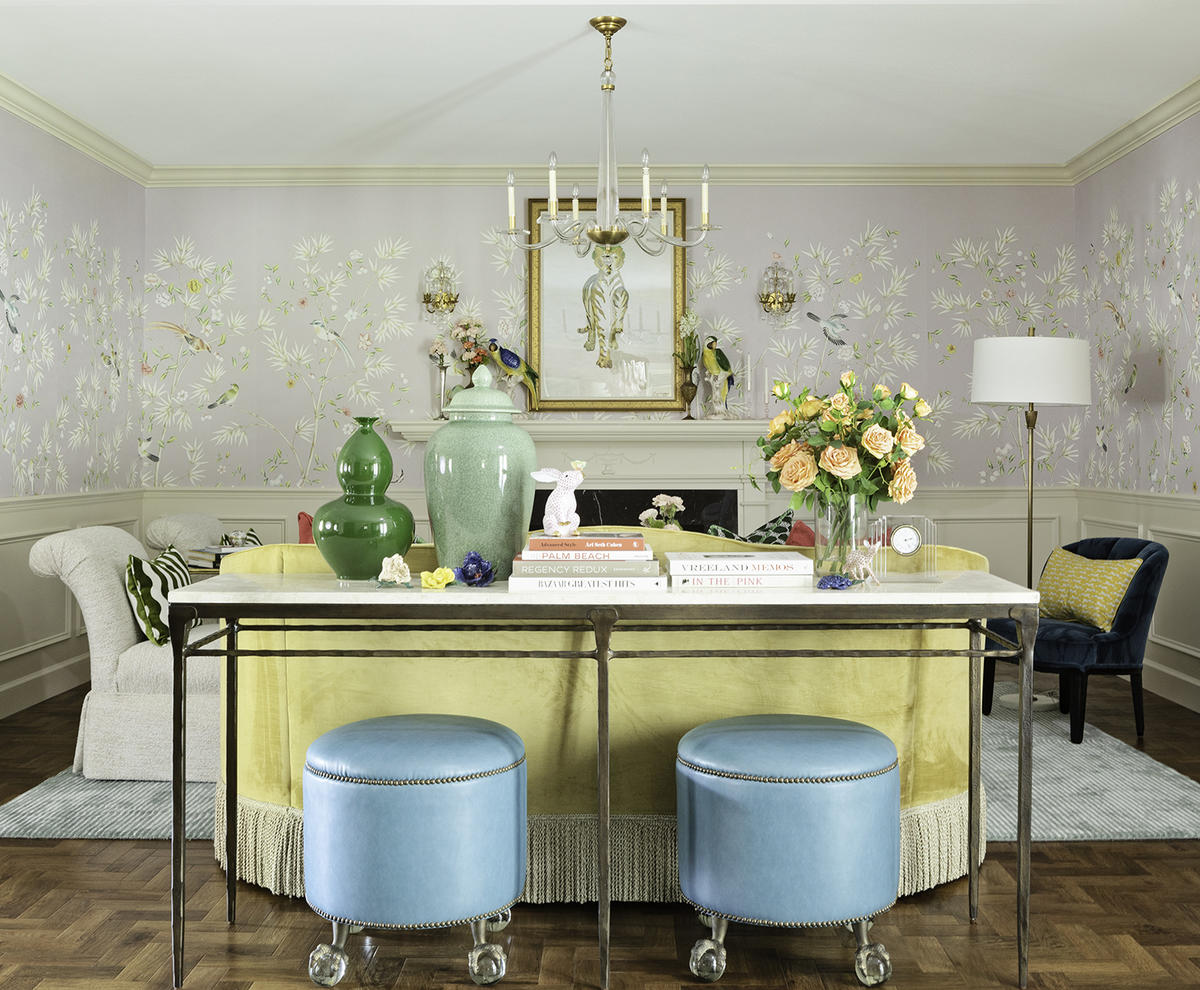
Are these primary homes, secondary homes, or a mix?
It’s a mix. There are a lot of people fleeing to Florida right now, so a lot of our clients are people are moving from another area. The housing market here is moving so fast. I do fear that new construction is going to get hit hard in the next year or two—especially now that we have prices that have increased 40 percent for labor and supplies. I mean, on a project that was going to be $1.2 million, 40 percent is a big jump. I think renovations are where it’s at. Even looking at the inquiries we’ve gotten in the past 10 years, it’s always been new construction or condos. Now, we’re 90 percent renovations.
How are you structuring billing for your work?
We bill hourly. We take a 40-hour retainer upfront, which is $11,000, and then we bill monthly and hourly off of that. One thing I did that was a huge game-changer, and that has helped with revenue, is that we charge $275 per hour for everyone. I don’t care if it’s an assistant, or for procurement or if it’s me—it is $275. I did that because, first of all, everyone on my team is crucial to get your project done. No one’s value is more or less than the other. I am a firm believer in that, and it’s important for our company culture. It also stops people from nickel-and-diming and being like, “I would like the cheaper person to work on this.” It just takes all of those questions out and there’s no room for negotiation.
I also bill for literally everything: phone conversations, pricing, procurement. I feel like that’s an area where designers are scared, because they feel like they’re double-charging. But really, they’re not—they’re charging a premium for a luxury service. I think designers often forget that: At the end of the day, we’re a luxury. People are really choosing, and you have the upper hand here. There’s no reason to not be compensated for it.
Do you also charge a fee for product?
We have a margin on our product, and it’s kind of a sliding scale. We’re trying to get that to where we’re charging clients anywhere from 20 to 30 percent off MSRP. I wish there was an easy, cut-and-dried way to do that, but every vendor discounts differently, so unfortunately there’s not. That’s one area that we actually are really putting a microscope on and see if there is an easier way to do that. Right now, my procurement person will do Google checks on certain products. Luckily, most of our clients don’t price-check us anymore because they have so much trust established up front that by the time we get to the purchasing part they’re like, “Whatever Lisa says, we’ll do.”
What is your approach to social media today?
It’s so funny to watch the change in social media, and the difference in the tools that we have now. I definitely jumped on the social media bandwagon to the point where people probably were annoyed with me, but I think it helped get my name out there quickly. For the longest time, none of my clients were on Instagram. Now, all of them are, and they’ll be like, “Oh, I saw that post.” At first, I felt like I was just posting to this world of people I didn’t know, but now it’s so real. Yesterday, I went into Tory Burch and bought a pair of sneakers. The sales girl was like, “I’m so sorry. It’s so embarrassing, but I noticed your name. Are you an interior designer? I love your work. I’ve been following you for such a long time.” It was so awkward and so amazing at the same time. I didn’t know what to say.
I have to say, I have a bit of social-media fatigue right now. I recently hired a social media team out of Los Angeles because I was just getting really tired of it. I was so burnt out and in such a bad mental place that I felt like I wasn’t being genuine. Now I’m back on social media because the chore of it isn’t there anymore—I can be more active in stories and posting fun things, and they take care of the rest.
How do you balance keeping your voice, but having someone else step in and do the heavy lifting there?
It was really hard, and it was something that I was very scared of. The team I’m working with is Be Inspired PR, and they are lovely. My account manager did so much upfront—she listened to my podcasts, reads articles I’m in, and extracts from all of that to create content. It’s like people finding a designer for your home—you can’t just hire some random person, you have to connect with them.
Where do you see the most opportunity to grow, and what kind of growth excites you today?
Company culture is huge for me. I hope that my team—they’re my ride or die—stays with me and continues to grow. And I want to continue to empower people to build businesses with creativity—I think there are a lot of people like me in the industry who had such fear of the financial side, and I want to show them that once you break that away, your life will change in such a grand way. And then just continuing to work with people that truly appreciate us and want creative spaces. I’m working on a rug line, and I want to start doing more products and have some exclusive things.
I have a business life coach that I talk to every Monday morning. Recently, I told her, “I’m just really content. Even though we’re working out the systems and things are a little crazy because of COVID, I feel good. For the first time in a long time, I feel very in control.” I started taking a clay class for my personal creativity. I put so much creativity into others that my personal well was really dry, which is something I’m working on this year.
That has to be so liberating.
I’m really basking in the moment and celebrating the success that I have. I feel like as Americans, we’re conditioned to hustle and to always be going towards the next goal or the next dream, and I’m 1,000 percent that kind of person. If I’m not doing something, I slump into a sour mood. But there’s something really beautiful about being in the content-and-happy phase. Lately, I’ve just really been sitting back and admiring what I built.
To learn more about Lisa Gilmore, visit her website or find her on Instagram.















